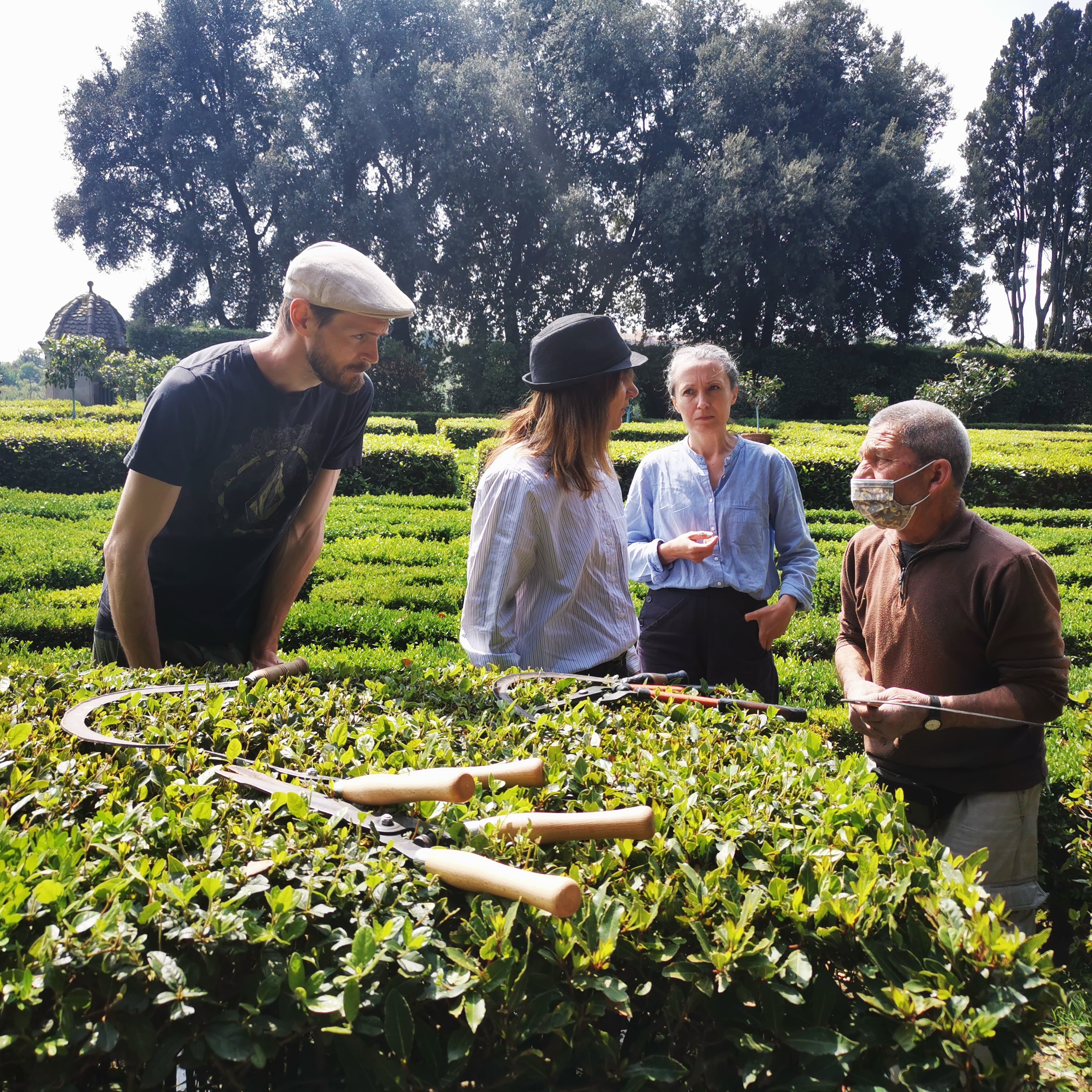Cutting a box hedge with a sickle
An intangible cultural heritage
DOI:
https://doi.org/10.7577/formakademisk.5443Keywords:
intangible cultural heritage, craft, clipping box hedge, historic gardens, heritage gardeningAbstract
United Nations Educational, Scientific and Cultural Organization (UNESCO) has identified craft as an intangible cultural heritage in the Convention for the Safeguarding of the Intangible Cultural Heritage. The nature of this cultural heritage is that it must be practiced by living craftspeople to endure, and when it is performed by very few, it can be seen as endangered. This research, funded by the Carl-Göran Adelswärds Foundation, is a documentation of such a craft: cutting a box hedge with a sickle. At the same time, in this study, a master–apprentice situation was staged in order to safeguard this traditional craft and pass it on to new craftspeople. The core elements of this learning procedure are imitation and feedback. This specific craft is an ancient tradition with very few living practitioners. The garden in which this endangered craft is still practiced is Castello Ruspoli, created in 1611, when sickles where still used for cutting box hedge hedges. Thanks to the restoration and preservation by the current owners, it is one of the most well-preserved gardens from that time. One of the reasons this garden is so special is the way it is cared for by the gardener, Santino Garbuglia, using traditional craft methods that this film article will investigate and show. The author argues that some traditional gardening methods should be considered intangible cultural heritages and safeguarded as such.
References
Castello Ruspoli. (2023). The castle. https://castelloruspoli.com/en/the-castle/
Dewey, J. (2015). Att göra en erfarenhet [Having an Experience]. In J. Hjertström Lappalainen (Ed.), Klassiska texter om praktisk kunskap (pp. 63–94). Södertörns Högskola. (Original work published 1934)
Fernström, P., Dahlberg, M., Sirviö, E.-L., & Lahti, H. (2021). Crafting short films. Biennial International Conference for the Craft Sciences. (2021). Version 1. https://biccs.dh.gu.se/2021/9/1
Fjäderhane, A. M., & Arvidsson, L. (1963). Arbetsstudier i trädgårdsodlingen. Alnarp.
Groth, C. (2017). Making Sense Through Hands. Design and Craft Practice Analysed as Embodied Cognition [Doctoral dissertation, Aalto University]. Helsinki. https://aaltodoc.aalto.fi/handle/123456789/24839
Ho, W.-G. (2021). Three observations on filming tactility and movement in crafts-based practice: A preliminary investigation. FormAkademisk, 14(2). https://doi.org/10.7577/formakademisk.4407
Ingold, T. (2000). The perception of the environment: Essays on livelihood, dwelling and skill. Routledge.
Karling, S. (1970). Drottning Christinas franske trädgårdsmästare. Uppsala.
Lundström, A. (1833). Handbok i trädgårds-skötseln (2. uppl.). G. Scheutz.
Müller, D. (1857). Skogsvännen: anvisning att till skog uppodla ofruktbar mark, förbättra glesa skogar, plantera alléer, häckar m.m.: Till motverkande af den hotande vedbristen, till klimatets förbättring och landets försköning. Bonnier.
Schön, D. A. (1983). The reflective practitioner: How professionals think in action. Basic Books.
Seiler, J. (2020). Management regimes for lawns and hedges in historic gardens [PhD dissertation, Gotheburg University). Gupea. http://hdl.handle.net/2077/62813
Seiler, J., Eriksson, L., Westerlund, T., & Almevik, G. (2021). Ways of tacit knowing: A film article. FormAkademisk, 14(2). https://doi.org/10.7577/formakademisk.4406
UNESCO. (2003). Purpose of the lists. https://ich.unesco.org/en/purpose-of-the-lists-00807
UNESCO. (2023a). What is intangible heritage. https://ich.unesco.org/en/what-is-intangible-heritage-00003
UNESCO. (2023b). Traditional craftsmanship. https://ich.unesco.org/en/traditional-craftsmanship-00057
Wimmer, C. A. (2012). Hippe, Krail und Rasenpatsche: Zur Geschichte der Gartengeräte. VDG Weimar.

Downloads
Published
How to Cite
Issue
Section
License
Copyright (c) 2023 Joakim Seiler

This work is licensed under a Creative Commons Attribution-NoDerivatives 4.0 International License.
Authors who publish with this journal agree to the following terms:
- Authors retain copyright and grant the journal right of first publication with the work simultaneously licensed under a Creative Commons Attribution 4.0 License that allows others to share the work with an acknowledgement of the work's authorship and initial publication in this journal.
- Authors are able to enter into separate, additional contractual arrangements for the non-exclusive distribution of the journal's published version of the work (e.g., post it to an institutional repository or publish it in a book), with an acknowledgement of its initial publication in this journal.
- Authors are permitted and encouraged to post their work online (e.g., in institutional repositories or on their website) prior to and during the submission process, as it can lead to productive exchanges, as well as earlier and greater citation of published work (See The Effect of Open Access).
- The author(s) must manage their economic reproduction rights to any third party.
- The journal makes no financial or other compensation for submissions, unless a separate agreement regarding this matter has been made with the author(s).
- The journal is obliged to archive the manuscript (including metadata) in its originally published digital form for at least a suitable amount of time in which the manuscript can be accessed via a long-term archive for digital material, such as in the Norwegian universities’ institutional archives within the framework of the NORA partnership.
The material will be published OpenAccess with a Creative Commons 4.0 License which allows anyone to read, share and adapt the content, even commercially under the licence terms:
This work needs to be appropriately attributed/credited, a link must be provided to the CC-BY 4.0 licence, and changes made need to be indicated in a reasonable manner, but not in any way that suggests that the licensor endorses you or your use.



